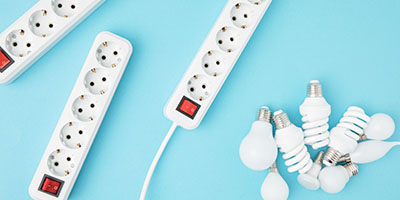Top 9 Energy-Efficient Home Improvements to Help You Save

Go Green With These Energy-Saving Home Improvements
Utilities can be costly, but with these energy-efficient home upgrades, you can save money and help the environment in the long run. To start, choose which upgrades make the most sense for your home and keep this list handy when you’re ready to tackle larger projects.

“Energy efficient upgrades are variable in time and financial commitment, but each upgrade, no matter the size, can make a significant impact in your savings and carbon footprint. Turning off lights when you exit a room, washing clothes in cold water, unplugging appliances not in use, using curtains during the hottest part of the day and wearing a sweater instead of turning up the heat are all small actions with high impact that can reduce energy usage.”
Chloe Musick, Director of Public Affairs and Marketing, Sustainable Ohio Public Energy Council
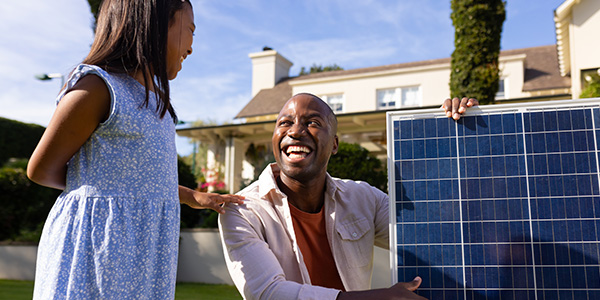
Benefits of Home Improvement Energy Efficiency
Save Money on Utilities and Taxes
Eco-friendly home improvement ideas can help you save money, not only on utilities but also on taxes. Qualified energy-efficient home improvements made after January 1, 2023, may earn you a tax credit of up to $3,200 through 2032, according to the IRS. Additionally, you may be able to save even more through rebate programs, says Emma Baumgart of Elevate Energy.

“Before you start making upgrades at your home, look up your utility providers to see what incentives they provide. Most utilities offer rebates for recycling old appliances, incentives for energy efficiency upgrades like air sealing and insulation, and free products like LED light bulbs for homeowners.”
Emma Baumgart, Elevate Energy
Help the Environment
By adding energy-efficient upgrades, you’ll be able to reduce the amount of water used in your home and lower your power usage, which will help reduce greenhouse gas emissions.
Energy Star, a program run by the U.S. Environmental Protection Agency (EPA) and the U.S. Department of Energy, helps you find the best appliances and materials to upgrade your home to be more energy efficient. In 2020, the Energy Star program helped U.S. citizens and businesses save:
- 520 billion kilowatt-hours of electricity
- $42 million in energy costs
- 400 million metric tons of greenhouse gas
Live More Comfortably
With home efficiency upgrades like adding insulation, getting a new refrigerator and replacing windows and doors, you’ll experience fewer drafts, reduce noise from appliances and improve air quality in your home.

“Energy-efficient upgrades are among the easiest and most cost-effective ways in which
you can improve the comfort of your home, minimize your home’s impact on the
environment, and save money on your energy bills.”
Paige Knutsen, Executive Director, Midwest Energy Efficiency Alliance
9 Home Upgrades That Pay
These energy-efficient home improvement ideas will help you keep some cash in your pocket and boost the value of your home over time as you complete each project.
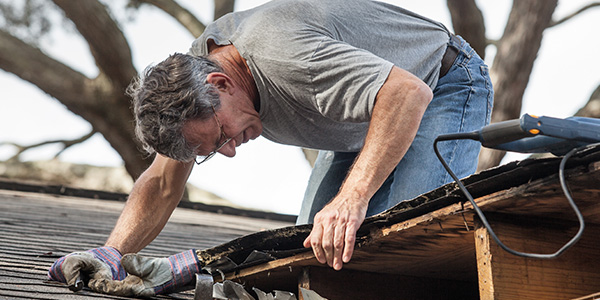
1. Repair or Replace Your Roof
Average Cost: $9,440
Average Energy Savings: $300 - $500 yearly
Between the hot summer sun and freezing temperatures in the winter, your roof takes the brunt of seasonal weather changes. An old roof typically has cracks and old materials, leading to heat loss. That means your heating system is working harder and driving up your energy bill. It’s time to replace your roof if:
- It’s older than 20 years
- You’re experiencing leaks
- You notice missing, cracking or curled shingles
After removing your old shingles, consider using materials like clay or sheet metal instead of asphalt. They will help reflect heat rather than absorb it, naturally keeping your home cooler. If you don’t have to fully replace your roof, you can try adding a cool roof coating to help keep out the heat.
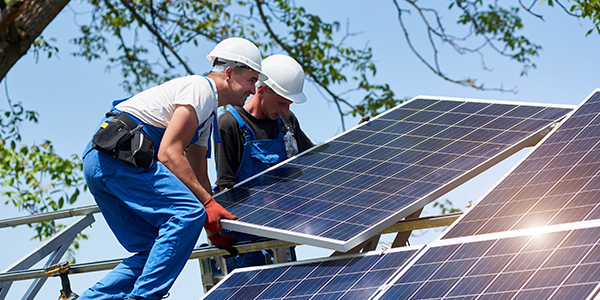
2. Install Solar Panels
Average Cost: $29,926
Average Energy Savings: $28,00 - $120,000 over solar panels’ lifetime
If you’re willing and able to make a more expensive energy-efficient upgrade, installing solar panels can reduce your home energy bills every year. Solar panels typically last over 30 years. The average U.S. homeowner saves between $28,000 and $120,000 on electricity after installing solar panels. And with the federal solar tax credit, you can get a credit of 30% of your solar installation cost. Depending on your state, you may be eligible for additional incentives.

Pro Tip
Hold off on investing in solar panels if you’re planning on moving within a few years after installation. Some experts say it’s safest to stay put until the panels pay for themselves.
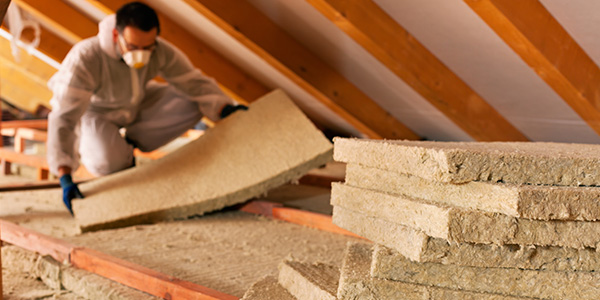
3. Add an Extra Layer of Insulation
Average Cost: $1,848
Average Energy Savings: $200 - $500 yearly
None of the changes you make on your roof will improve home energy efficiency unless you have a quality ventilation system. Make sure all areas in your house, such as attics, basements and crawl spaces, are properly insulated. This will help keep the cool or warm air inside, reduce your heating and cooling costs, and improve the overall comfort level in your home. Also, proper insulation can help extend the life of your roof.
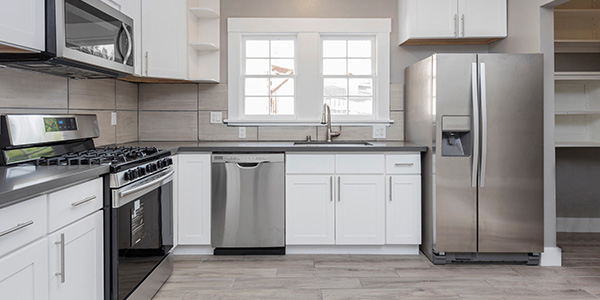
4. Upgrade Your Appliances
Average Cost: $2,100 - $5,400
Average Energy Savings: $450 yearly

Pro Tip
When shopping for appliances, look for the Energy Star label, which means the product has met the EPA’s energy-savings standards.
An energy-efficient home upgrade you can take on over time is replacing your appliances. Make sure you know the life expectancy of your current appliances, as they may become less energy-efficient toward the end of their life span. Refrigerators, washing machines and dryers are at the top of the list for appliances that use the most electricity. Replace them on an as-needed basis, but make sure to do your research on which brands have earned the Energy Star seal of approval. When you purchase an Energy Star certified product, you may be eligible for a rebate.

“Not all appliances are made equal when it comes to energy efficiency. When purchasing an appliance, you should pay attention to two numbers: 1) the initial purchase price and 2) the annual operating cost. Although they usually come with a higher purchase price, their operating costs are 9% to 25% lower than conventional models.”
Alix Langone, Senior Research Analyst, EnergySage
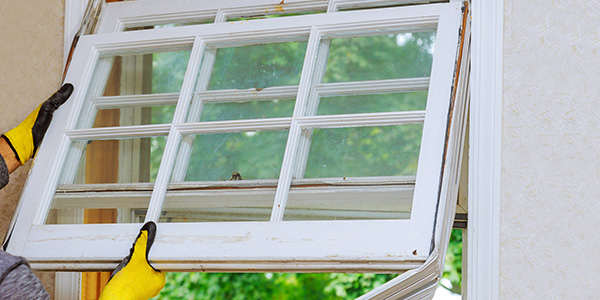
5. Replace or Seal Windows and Doors
Average Cost: $500 per window
Average Energy Savings: $101 - $583 yearly
If your windows are more than two decades old, consider replacing them with more efficient models. If you aren’t in need of a full window replacement, storm windows are an easy, economical way to increase the efficiency of older, single-pane windows. When fully replacing your windows, consider buying double-paned models with a u-factor of .22 to .23. The u-factor of a window tells you how well your window insulates. The lower the u-factor, the better a window insulates.

“Windows are a significant source of energy waste, which can amount to 10% to 25% of your total heating bill. Depending on the climate where you live, Energy Star windows can save you $20 to $95 each year on your utility bills.”
Alix Langone, Senior Research Analyst, EnergySage
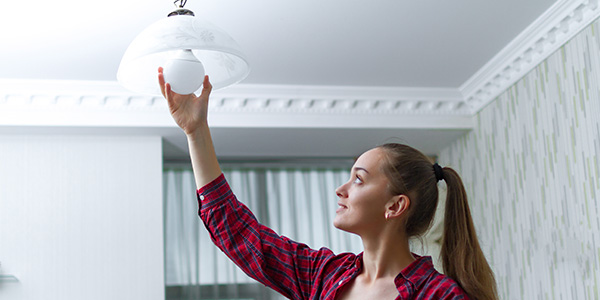
6. Opt for Energy-Efficient Lighting and Power Strips
Average Cost: $5 per light bulb
Average Energy Savings: $225 yearly
Looking for a simple energy-efficient upgrade you can accomplish today? Change all your light bulbs to LED models. Energy Star certified LED bulbs use up to 90% less energy than a standard bulb and can last up to 15 times longer.
According to Alix Langone of EnergySage, an estimated 75% of the energy used to power household electronics is consumed when they are switched off, which can cost you up to $200 per year.

“Did you know? The average home has 45 sockets or bulbs and about 60% of U.S. sockets still contain an inefficient light bulb. If you haven’t changed out all of your bulbs yet, this is the perfect time for this energy-efficient upgrade. A single light bulb that has earned the Energy Star can save more than $55 in electricity costs over its lifetime.”
Brittney Gordon, U.S. Environmental Protection Agency
Want to establish environmentally friendly habits?
Check out these 50 ways to conserve natural resources at home!
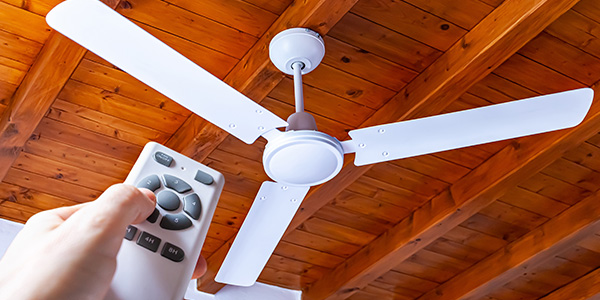
7. Install Ceiling Fans
Average Cost: $249
Average Energy Savings: $110 each summer
With both your air conditioner and ceiling fan operating, you can lower your thermostat by 4 degrees without losing any comfort during warmer months. Additionally, ceiling fans do more than just keep you cool in the summer. During colder weather, they can save energy in the reverse setting by circulating hot air that rises to the ceiling and blowing it back down into the room.

8. Replace Heating, Cooling and Water Systems
Average Cost: $10,000
Average Energy Savings: $1,000 yearly
A big home upgrade that pays is installing a new water heater. Electric heat pump water heaters (HPWHs) are now available from all major water heater manufacturers, making it easy to choose electric over less efficient fossil fuel options.

“A standard water heater is about 60% efficient. Some of the better models of HPWHs already exceed the new appliance standard — reaching between 200% and 350% efficiency.”
Bruce Sullivan, Zero Energy Project
If your HVAC equipment is more than 10 years old, or not keeping your house at a comfortable temperature, consider investing in a new unit that is Energy Star certified. Depending on where you live, this can save you about 20% on your annual energy bill.
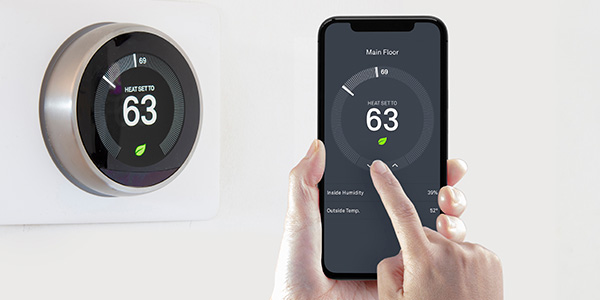
9. Install a Programmable or Smart Thermostat
Average Cost: $200 - $500
Average Savings: $100 yearly
Another simple, budget-friendly way to increase energy efficiency is to install a programmable thermostat that will automatically turn off or reduce heating and cooling during the times you’re asleep or away from home.
Improve Home Energy Efficiency With an Energy Rating
The best way to see where your home can specifically benefit from energy-efficient updates is by investing in a Home Energy Rating System (HERS) Index Rating. A certified energy auditor will come to your home and conduct a computerized energy model to calculate your home’s efficiency, based on a scale of 1 to 100. Knowing this score can help you assess what improvements you need to make and can add to the overall value of your home. An energy audit will run you between $200 and $700, though it can be higher in certain locations. But it will save you money for years to come.

“To identify more comprehensive energy saving opportunities in your home, we
recommend finding a residential energy auditor in your area. An energy auditor will
identify some of the more hidden and often overlooked opportunities for no- and low-cost improvements, like sealing around windows and doors, to improvements that can take more time to plan, like adding insulation to your home, to identifying appliances that
could benefit the most from upgrades.”
Paige Knutsen, Executive Director, Midwest Energy Efficiency Alliance

“If possible, one of the best times to do these improvements is when a house changes hands or when building a new home. The new home buyer can finance these fairly major improvements into their new mortgage. Well-planned energy efficiency features almost always pay for themselves.”
Bruce Sullivan, Zero Energy Project


